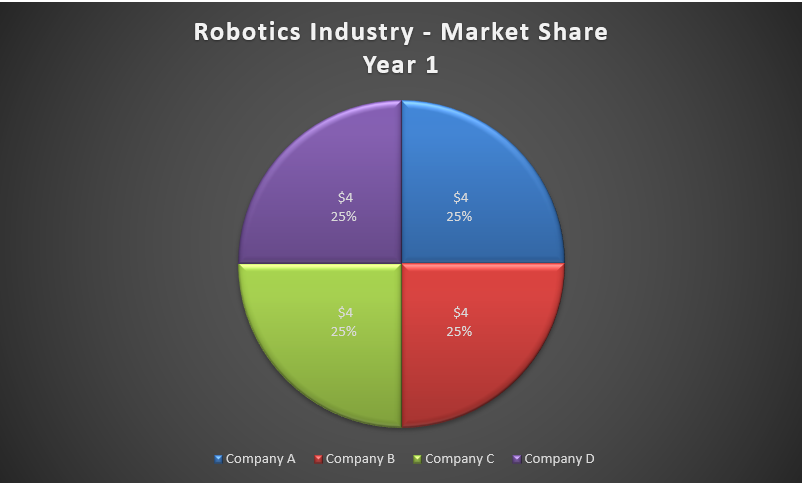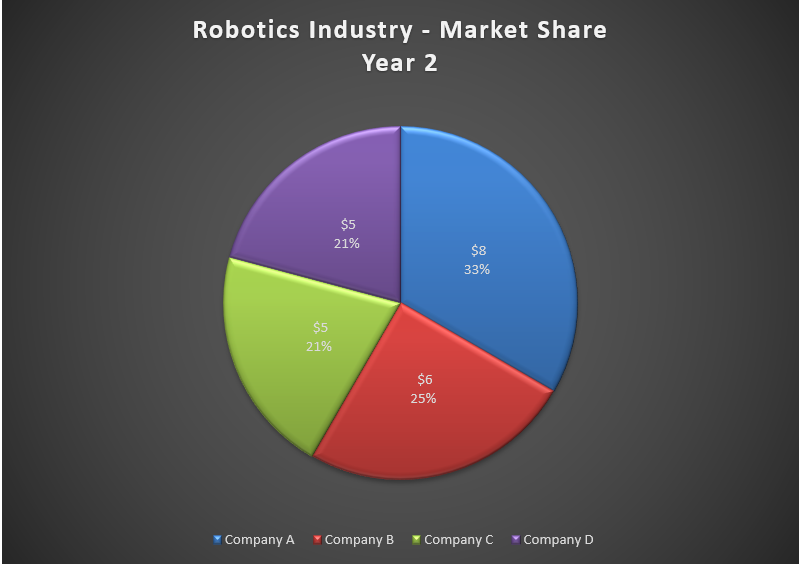Market Share
View FREE Lessons!
Definition of Market Share:
Market share is the percentage of industry sales of a good or service that is earned by a company. For example, assume the cereal industry is a $10 billion market and one company has sales of $3 billion. The company has a market share of 30 percent.
Detailed Explanation:
“Market” in market share is identified by what good or service is being offered and where the good or service is being sold. Market share can be measured by either the total number of units sold or the total revenue from the sale of a good or service. Normally total revenue is used.
Investors consider shifts in a company’s market share when evaluating its competitiveness. Companies gain market share by either capturing more of a growing market by attracting a larger percentage of the new buyers, or by persuading consumers to switch brands. When a company maintains its market share in a growing market its sales increase at the same rate as the market. Companies try to capture market share through innovations, advertising, opening new outlets, or reducing their prices.
For example, assume the robotics industry has four companies: Company A, Company B, Company C, and Company D. Assume the industry has $16 billion in sales, annually. Each company has sales of $4 billion, which means all the companies have a market share of 25 percent, as shown on the pie chart below.

Technologies are developed and sales in the industry increase 50 percent over the next year. Assume in Year 2 Company A’s sales increase to $8 billion, Company B’s sales jump to equal $6 billion, Company C and D also had an increase in sales, but only to $5 billion. While each company enjoyed an increase in sales, only Company A had an increase in its market share. It jumped to 33 percent. In fact, Company C and Company D’s market share dropped from 25 percent to 21 percent.

Investors and management would like to know how much of Company A’s growth is attributable to industrial growth and how much resulted from more aggressive marketing. Each company’s sales would have increased by $2 billion if they shared in the growth equally. Since Company A’s sales increased $4 billion we can conclude that $2 billion resulted from its added marketing efforts. What is gained in market share by one company must be lost by another. What caused the decline in Company C and D’s market shares? Perhaps fewer first-time robotic buyers patronized these companies. Or, some robotics buyers may have switched from C or D to B or A.
Economists and financial analysts use market share to measure the concentration of an industry. A high concentration enables an industry to have more economic power in setting its prices. Monopolies have a market share of 100 percent because by definition there is only one provider of a good or service. Government officials usually believe a monopoly's market power is sufficient to warrant regulation. Industries, where the market share of the four largest companies is equal to or greater than 40 percent, are considered oligopolies. Oligopolies compete fiercely to gain market share. Even the largest companies in a perfectly competitive industry have very low market shares. They have no control of the market. These companies are price takers because they are too small to influence the price of a good or service.
Dig Deeper With These Free Lessons:
Market Structures Part I – Perfect Competition and Monopoly
Market Structures Part II – Monopolistic Competition and Oligopoly
Changes in Demand – When Consumer Tastes Change

